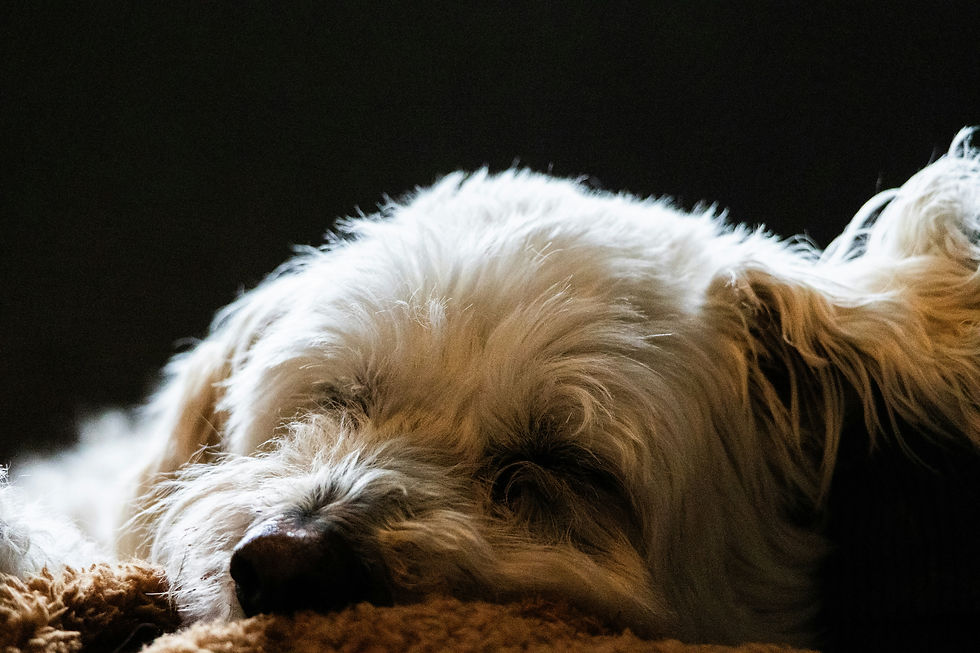Our Philosophy On Pet Sedation
- River Valley Gateway

- Oct 5, 2020
- 4 min read
Updated: Oct 6, 2020
What is Pet Sedation?
Pet parents LOVE their furry sidekicks and will often go to extreme lengths to get them the care they need. However, with that being said, so many pet parents have surface-level knowledge when it comes to what is actually happening to their pets during most procedures occurring within the animal-care field. Pet sedation is a great example of pet parents having surface-level knowledge when it comes to the procedures their 4-legger is undergoing. So in this article, we aim to educate our clients about what it means for their pet to be sedated.

First of all, with the general understanding that sedation causes the pet to be less responsive, we need to help you understand that there are various levels of sedation achieved by different sedatives. This means that there are many different drugs that can cause sedation but not all sedative type drugs can achieve all of the levels of sedation. There are levels in which a pet is not entirely unconscious, but has a drastic decrease in awareness, and there are levels in which a pet is entirely unconscious and does not have feeling as if the body is completely numb and void of feeling anything. So, depending on the level of sedation, a pet may or may not be able to wag their tail or slightly move their head upon hearing their name. And in contrast, depending on the level of sedation, a pet could undergo a complete surgical procedure without feeling a thing.
Sedation medications can be given in various ways but are commonly given under the pet's skin or into a muscle via injection. The medication makes its way into the pet's body and then quickly goes to work relaxing the pet. Relaxation is the beginning of every sedative and if relaxation is the only goal a certain sedative will be chosen. This means a mild sedative is given. But, if a painful procedure is anticipated or a procedure where complete unconsciousness is the goal, then a heavy sedative needs to be chosen. The procedures or experience can begin once the sedation medication is in full effect.
Why is Pet Sedation Necessary?
Veterinarians usually administer sedation for 3 main reasons. The first case in which sedation may be necessary is when a pet is going to be encountering a situation causing anxiety. An example of this would be traveling. If a pet is fearful of travel then providing a mild sedative would help lessen the anxiety the pet would have to endure. The pet would still be able to walk, eat, drink, and care for itself however would remain much calmer under the circumstances. Secondly, if a pet is needing to undergo a procedure that is not necessarily painful but requires the pet to be completely still then a moderate sedative could be chosen. An example of this could be an ultrasound. Since we can't ask our pets to lie completely still or hold a certain position and "don't move", we could give them a moderate sedative allowing them to be completely relaxed and amendable to lying still for an extended period of time remaining conscious and "telling us" if something were painful. If a procedure, such as dental extractions or intestinal surgery is required, a heavy sedative taking the pet to a deeper anesthetic sleep is necessary to relieve any possibility of the pet experiencing pain during these known painful procedures.

One additional note where a heavy sedative should be chosen is when a peaceful environment is being created for the pet to pass away into death. A peaceful environment is a loving and respectful gesture provided for a euthanasia experience. Helping our pets pass peacefully under the influence of a heavy sedative assures us that we helped our pet remain as comfortable as possible. The longer a heavy sedative is allowed to work in the pet's body, the more they become unaware of their surroundings and if they are experiencing any discomfort or pain, the sedative will relieve this as the relaxation sets in. Heavy sedation works gently to take the patient to a state of anesthetic sleep which is the deepest level of sedation completely void of feeling. At first, muscle relaxation and complete pain relief sets in. Next, the pet will move into a state of tranquility. During this state, they feel calm but are able to still make small movements. Usually deeper restful breaths are noted and many clients make the comment, "I haven't seen him this peaceful in a long time" and are able to take some deep breaths themselves. As the pet's awareness levels continue to melt away, their senses will start to leave them as well. First, the pet will lose its vision, next, its hearing, and lastly its sense of smell. When our pets are experiencing a euthanasia, their sense of smell will continue to comfort them up until the last breath. As breathing ceases we have the first sign of death when the brain is no longer giving the lungs signals to breathe and lastly the heartbeats stop as the brain no longer gives the heart signals to keep beating. We believe in administering proper sedatives to our pets for the experience at hand. Dr Norton, with River Valley Gateway, has been trained by the Animal International Association of Hospice and Palliative Care (IAAHPC) and holds a 2-year training certification on top of her veterinary degree. She has specific training for end-of-life experiences and strives to provide every pet entrusted to her care with the most appropriate medications and protocols to keep them as comfortable and as pain free as possible for a very peaceful passing.
For more information regarding services we offer and information about pets in general, visit our blog page for some great education.







